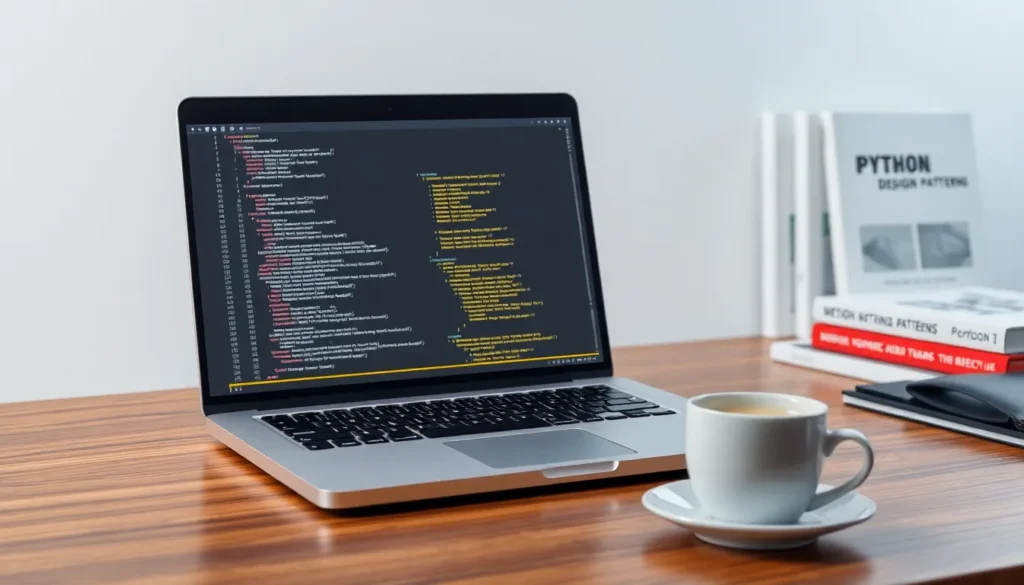Python classes are like the secret sauce in the programming world, turning ordinary code into a gourmet meal. If you’ve ever wanted to wield the power of object-oriented programming without breaking a sweat, you’re in the right place. Classes let developers create blueprints for their objects, making life easier and code cleaner.
Table of Contents
ToggleOverview of Python Classes
Python classes serve as essential building blocks in object-oriented programming. Developers create classes to define the structure and behavior of objects. These classes act as blueprints, encapsulating data and methods related to specific functions.
In Python, a class is defined using the class keyword, followed by the class name. Developers often follow naming conventions, capitalizing the first letter of each word (PascalCase), such as Car or Employee. Objects instantiated from classes, called instances, access class methods and attributes, promoting code reuse and organization.
Constructors, defined by the __init__ method, initialize object attributes during creation. Class attributes apply to all instances, making them great for shared data. Instance attributes reflect unique data for individual objects.
Python also supports inheritance within classes. Inheritance allows a class to derive properties and methods from another class, enhancing code efficiency. For example, a Vehicle class can serve as a parent, with Car and Truck as child classes inheriting from it. This structure reduces redundancy and facilitates maintenance.
Encapsulation leads to data hiding, promoting security by restricting access to certain attributes and methods. Classes utilize private attributes, accessible only within the class context, enhancing the control developers have over data exposure.
Polymorphism enables flexibility in programming by allowing objects of different classes to be treated as objects of a common superclass. Overriding methods in child classes provides specialized functionality while maintaining a consistent interface.
Overall, understanding how to utilize Python classes effectively is crucial for developing maintainable and efficient code. Through thoughtful design and application of classes, developers achieve clarity and organization in their projects.
Benefits of Using Python Classes

Python classes provide numerous benefits that enhance programming efficiency and effectiveness. These advantages include code reusability and improved organization.
Code Reusability
Code reusability stands out as a primary benefit of Python classes. Developers create object blueprints once and reuse them across multiple projects. By defining common functionalities within a class, one instance can serve various purposes. When modifications occur, updates apply to the class, automatically affecting every instance derived from it. This capability not only minimizes duplicate code but also streamlines maintenance, promoting efficiency. Furthermore, inheritance allows for additional features without altering existing code, further enhancing reusability. For developers, this practice saves time and resources while maintaining high standards of code quality.
Improved Organization
Improved organization emerges as another significant advantage of using Python classes. Classes enable developers to structure code logically, grouping related methods and attributes. This structure simplifies navigation through complex codebases, making it easy to locate specific functionalities. When classes encapsulate data, they create a clear separation between different components of a program. Such separation enhances readability and allows for better management of code as projects scale. With organized code, collaboration becomes seamless, as team members can grasp and adapt to the system more quickly. Overall, utilizing classes fosters a clean architecture essential for effective coding practices.
Understanding Class Structure
Understanding class structure is essential for mastering Python classes. This structure defines how data and behaviors interact within the code.
Attributes and Methods
Attributes represent the data stored within a class, while methods denote the actions associated with that data. Developers define attributes within the class body, often using the init method for initialization. For example, a Car class might include attributes like color and model. Methods, on the other hand, perform functions such as starting the engine or displaying attributes. Each instance of a class can access its attributes and methods, promoting organization and reusability. Properly defining these elements allows for clear communication between the data stored and the behaviors executed in the program.
Inheritance in Python Classes
Inheritance allows one class to inherit properties and methods from another class, significantly enhancing code functionality. By establishing a parent-child relationship, developers can create more specific classes that extend base class capabilities. For instance, a Vehicle class can serve as a base class, while Car and Truck classes inherit its attributes and methods. This relationships streamline code maintenance, as changes to the parent class automatically propagate to child classes. Additionally, inheritance encourages a more logical structure for managing related classes, fostering the creation of more versatile and efficient code within the Python environment.
Practical Examples of Python Classes
Python classes enable the creation of various objects, demonstrating their versatility through practical examples. Below are examples covering simple class creation and techniques like subclassing.
Creating a Simple Class
Creating a basic class involves using the class keyword followed by the class name. Consider a class named Dog. This class can include attributes like name and age along with methods such as bark.
class Dog:
def __init__(self, name, age):
self.name = name
self.age = age
def bark(self):
return "Woof!"
Creating an instance of the Dog class allows access to its methods. With my_dog = Dog("Max", 5), the instance can call my_dog.bark() to produce “Woof!”. This organization enhances code clarity and reusability.
Subclassing and Overriding Methods
Subclassing promotes reuse by allowing the creation of derived classes. For instance, a Bulldog class can inherit from the Dog class, extending its attributes or methods.
class Bulldog(Dog):
def bark(self):
return "Bark! I'm a Bulldog!"
Using bulldog = Bulldog("Bruno", 3) demonstrates method overriding where the bark method outputs a custom message. This flexibility illustrates how to adapt inherited functionality while maintaining a coherent code structure.
Embracing Python classes can significantly enhance programming efficiency and code quality. By leveraging the power of object-oriented principles such as encapsulation and inheritance, developers can create organized and reusable code structures. This not only streamlines project maintenance but also fosters collaboration among team members.
The ability to define clear blueprints for objects allows for better management of complex systems. As developers continue to explore the capabilities of Python classes, they’ll find that mastering these concepts is essential for building robust applications. Ultimately, Python classes pave the way for more logical and maintainable code, making them indispensable in the toolkit of any proficient programmer.










